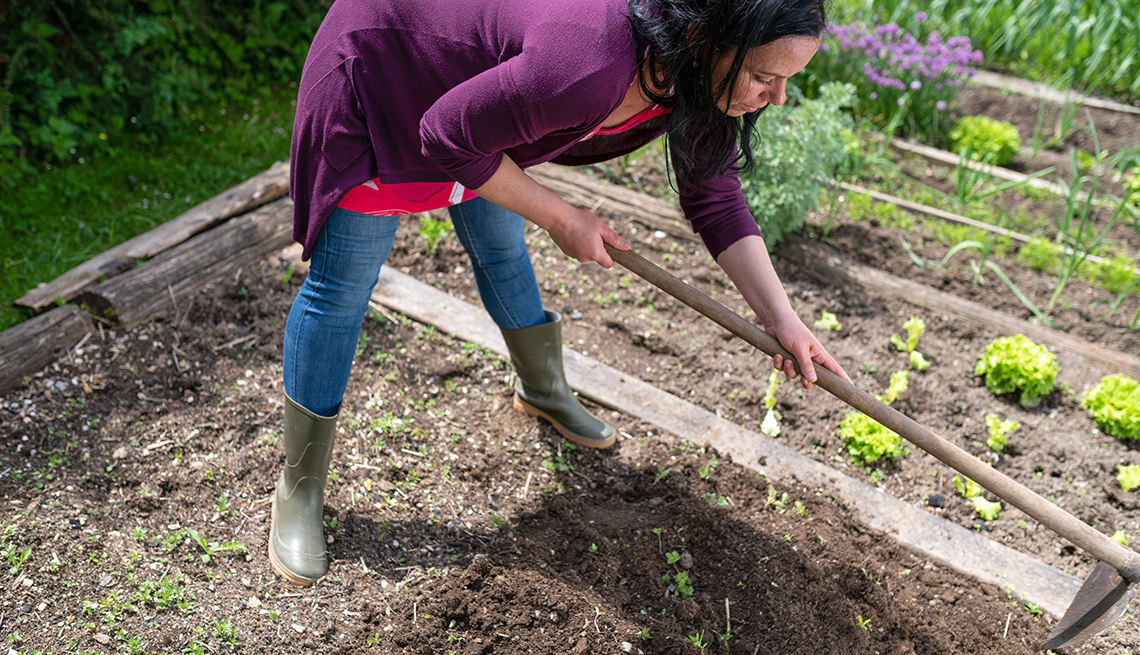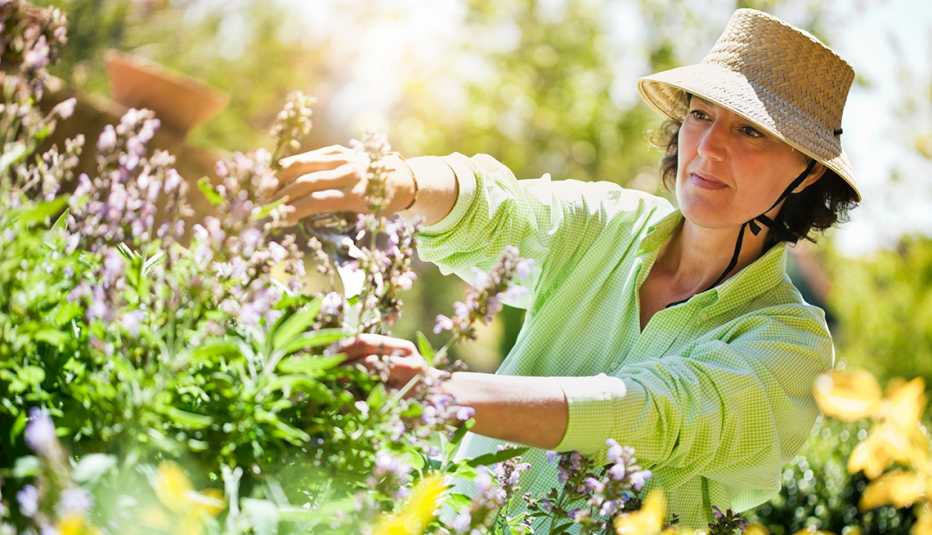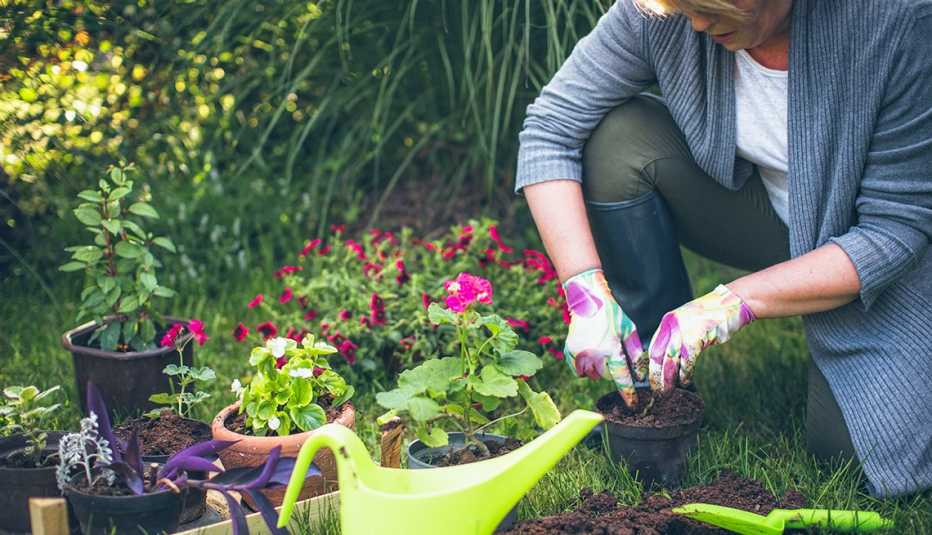AARP Hearing Center
Christine Zellers tries to run five miles every day and, at 53, considers herself to be in shape. But even she admits that gardening can leave her sore and achy.
“I feel it, especially in the beginning of the season,” she says.
Zellers, an assistant professor of family and community health sciences with Rutgers Cooperative Extension of Cape May County, New Jersey, teaches gardening, leads group exercise classes and grows vegetables and herbs in her own garden in Ocean City, New Jersey. To protect her body, she tries to remember to stretch and limber up before heading out to dig, plant or lug big pots around.
For more ideas on gardening and exercise, look to these sources:
- Your local extension service, associated with the U.S. Department of Agriculture, which may have materials like this fact sheet on gardening and exercise.
- The American Occupational Therapy Association’s tip sheet on safe gardening practices, with instructions on how to safely move and lift.
- The American Physical Therapy Association 30-minute home stretching routine, with suggestions for three different levels of fitness.
- Gardener’s Fitness: Weeding Out the Aches and Pains, a 1999 book by fitness writer Barbara Pearlman, featuring exercises and stretches as well as tips for caring for your hands and feet.
“You want to be thinking about the kind of movement you’re going to do and make sure you’re strengthening those body parts, like your core and your back and your legs and your quadriceps,” she says. “So you want to warm up a little bit just like you would if you were going for a run or doing an exercise class.”
Gardeners and health experts warn against jumping into gardening activities without some pre-game preparation to build strength, stamina and aerobic power and prevent injury.
For example, if your core body strength is off, your balance is also off, making falls a risk, says Maura Daly Iversen, a physical therapist and dean of the College of Health Professions at Sacred Heart University in Fairfield, Connecticut. And you need aerobic capacity to do the work, she says.
“My friends that don’t garden think it’s light work,” says Iversen, who admits to being an “over-50” gardener. “But it can be pretty hefty work when you’re removing bushes and whatever. So I think cardiovascular fitness is also important.”
No gym membership needed
Amy Wagenfeld, an occupational therapist who has worked with the Massachusetts Arthritis Foundation and now designs therapeutic gardens, puts stretching at the top of her pre-gardening list. Starting out cold is “not the optimal strategy,” she says.
“Heavy gardening — it’s the equivalent of some heavy lifting,” says Wagenfeld, 59, who’s waiting out the pandemic in Seattle. “If you’re shoveling, if you’re hoeing, if you’re raking, that’s work. And one of the most important things about getting in shape to garden is to stretch and to stretch and to stretch.”
You don’t need a gym membership to get in shape for the garden, she says. Just be sure to move and get in some steps every 20 minutes or so, even if it’s just walking around your house. Try some biceps curls using canned goods for weights or do some wall push-ups.





































































